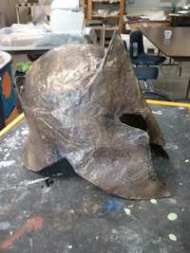“You say that you are my judge; take good heed of what you do, because, in truth, I am sent by God, and you put yourself in great peril.” -Joan of Arc 1429 (Translated from French)
For my final blog I will be focusing on the fall of Joan of Arc, beginning from her capture to her death.
Just as Joan’s aggressiveness in combat proved to be one of her greatest strengths as a military leader, so did it lead to her downfall. In early 1430, a truce with the English prevented Joan from engaging in combat. Respecting the wishes of her King, she honored the truce, but later confided to friends via letter, “I am not content with these truces and do not know if I will keep them” (Joan’s Letter to Reims). Joan got the opportunity she was looking for when the truce ended in spring and went to Compiegne to fight against Burgundian and English forces. While she was there to defend against a siege, she attempted a similar method that had brought her success at Orleans: she launched an ambitious assault. This time, her aggressive maneuver failed, and her troops were overwhelmed by Burgundian reinforcements. While her forces retreated, she lingered, and was captured by Burgundians on May 23 (Geiger 32-34). Once in Burgundian captivity, she attempted to escape several times, and was ultimately transferred over to English possession (Pernoud 96).

Castle of Rouen, where Joan was imprisoned during the trial. http://en.wikipedia.org/wiki/File:Tour_Jeanne_D%27Arc10.jpg
Joan was then put on trial for heresy and spent her days in night in the Castle Rouen. The conditions of such trial were not in line with the ecclesiastical order of the church. Bishop Cauchon took the leadership role in the case, but he was clearly partisan in favor of the English. There were problems with technicalities of evidence, the committee was full of pro-English Bishops, and other bishops, such as Guillaume Manchon, later reported feeling terrified to speak anything against the pro-English viewpoint during the trial (Williamson 2005). True to her aggressive nature, Joan asked for French bishops, but her request was denied (Taylor 137).
Remarkably, we know very much about what went on at the trial because of the detailed minutes taken. Originally taken in French and then translated into Latin, the primary sources for the trial reveal a mentally exhausting back and forth in cross examination between Joan and her excusers. The majority of the heresy charges settled around Joan’s wardrobe, which she refused to change out of or denounce. Additionally, she was confronted with numerous theological trap questions, specifically designed to set her up to unknowingly denounce herself. Joan maintained her connection with the divine throughout the trial and navigated around the trick questions seemingly effortlessly. When asked if she believed she was in God’s grace, which was a trick question as no one can know, Joan responded, “If I am not, may God put me there; and if I am, may God so keep me. I should be the saddest creature in the world if I knew I were not in His grace” (Barett, Trans).
Joan was essentially condemned a heretic for cross-dressing. She was burned at the stake on May 30 1431, almost a year after being captured. During her entire time imprisoned, not once did her beloved King Charles VII reach out to try and free her. Charles’ lack of interest in her fate perhaps hints something about the true power dynamic between her and the King. Was she a pawn used and discarded? Was she in a much less powerful position than contemporary scholars credit her for? Or was it the opposite, was King Charles VII content to let her go because she had gained too much prominence? The questions remain unanswered. However, almost assuredly, the scholastic community agrees that it was Joan’s drive and relentless determination that rose her to a place of prominence unheard of for peasant women in Europe at the time. It was also this drive and determination that sealed her fate.
Bibliography
BARRETT, Trans. W. P. “THE TRIAL OF JEANNE D’ARC TRANSLATED INTO ENGLISH FROM THE ORIGINAL FRENCH AND LATIN.” Medieval Sourcebook: The Trial of Joan of Arc (1932).
Geiger,Barbara (April 2008). “A Friend to Compiegne”. Calliope Magazine 18 (8): 32–34
Joan of Arc’s letter to the citizens of Reims, 5 August 1429; Quicherat I, p. 246, trans. Wikipedia.
Pernoud, Régine. Joan of Arc: Her Story, p. 96.
Taylor, Craig, Joan of Arc: La Pucelle, p. 137
Williamson, Allen. Excerpts of the Testimony on this subject at the Appeal. September 2005. 28 April 2014.














